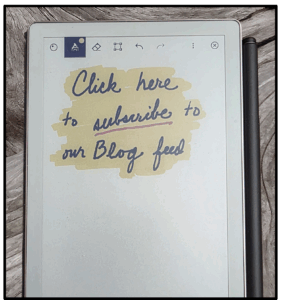UDI Implementation-Why You Need to Begin Today
In this blog, “UDI Implementation-Why You Need to Begin Today,” the author provides reasons why you should begin your implementation today and the benefits of doing so.
I have taken you through what UDI is, what you need to do to meet its compliance dates, and in the last few blogs, written about the steps you need to take to implement UDI in your organization. With the September 24, 2014 deadline looming, labelers of Class III devices and stand-alone software should be well on their way with implementation. But what about you who label implantable, life-sustaining, life-supporting (9/24/15 deadline), Class II (9/24/16 deadline), or Class I (9/24/18 deadline) devices? Should you wait or begin now?
UDI – Good Business Sense
There are many reasons why implementing UDI makes very good business sense. Two overriding reasons are increased revenues and lower costs. The healthcare industry has been using Automated Identification and Data Capture (AIDC) technology for a number of years. FDA has required since 2004, drug manufacturers use barcodes (NDC number) on their labels. Now, they require device manufacturers (labelers) use Unique Device Identifiers (UDI) on their medical device labels.
Hospitals and Group Purchasing Organizations (GPOs) have been at the forefront of persuading many medical device manufacturers to adopt UI for the devices they label. GPOs are now at the point of mandating manufacturers to implement UI to continue and/or obtain contracts to sell their devices to GPO hospital members. Even with that significant pressure, many manufacturers have resisted implementing UI. Of course, now, they will have no choice.
UDI Implementation-Why You Need to Begin Today
Manufacturers who have implemented UI have seen increased revenues and decreased costs. Their hospital/GPO customers view them as “easy-to-do” business with, resulting not only in an increase of sales of contracted devices but also of non-contracted devices. Hospitals must implement systems to reduce their costs. UDI is such a system. It will permit hospitals to manage their inventories better, reducing or eliminating product duplication, as well as realizing improved inventory tracking.
The use of product barcodes will allow hospitals to charge patients more accurately for the devices they use while hospitalized. Manufacturers have also been able to increase the speed to market for a new device compliant with UI, and by adding it to their existing GPO contracts. This can increase the new device’s exposure to the market very quickly.
Becton Dickinson Implementation
The March 2011 Edition of Healthcare Purchasing News published an article by Karen Conway that describes Becton, Dickinson, and Company (BD) Resource Optimization and Innovation (ROi) experiences implementing UI (GS1’s Global Trade Identification Number). Dennis Black (BD) and Alex Zimmerman (ROi) describe the positive impact implementing UI had on their businesses. They were able to document a 30% reduction in accounts payable days outstanding. Other findings included:
- 73% reduction in errors on customer orders
- fewer stock-outs
- greater process efficiency
- fewer calls to customer service
- better charge compliance
All are excellent reasons to start UDI implementation now.
Regulatory Affairs will also benefit from implementing UDIs. Improving the recall process will help reduce costs through easier tracking of which customers to contact, versus what is typically a very arduous and time-consuming process today. Starting now will also allow you to control the pace of the required changes to your organization, and collect data needed to submit to GUDID. This regulation will put your organization under a tremendous amount of pressure without having to deal with the crisis of a short implementation window.
The most common mistake I have seen organizations make is poor planning around UDI implementation. They significantly underestimate the amount of time it will take to implement UDI, the amount of change that will occur within the organization to be compliant, and being able to manage the ongoing requirements of UDI. These issues are compounded for multi-site organizations, where project planning is critical.
Earlier in this blog, I mentioned hospitals using barcodes to charge fees for devices used by patients. This information will be added to the patient’s electronic health record. From there, this information will work its way into large population databases, such as claim data. Manufacturers will ultimately be able to use this claim data to identify new potential intended uses for products, and thereby expand their target markets.
Implementing UDI now makes good business sense. Why wait and put your organization in jeopardy?
UDI Implementation-Why You Need to Begin Today Read More »












